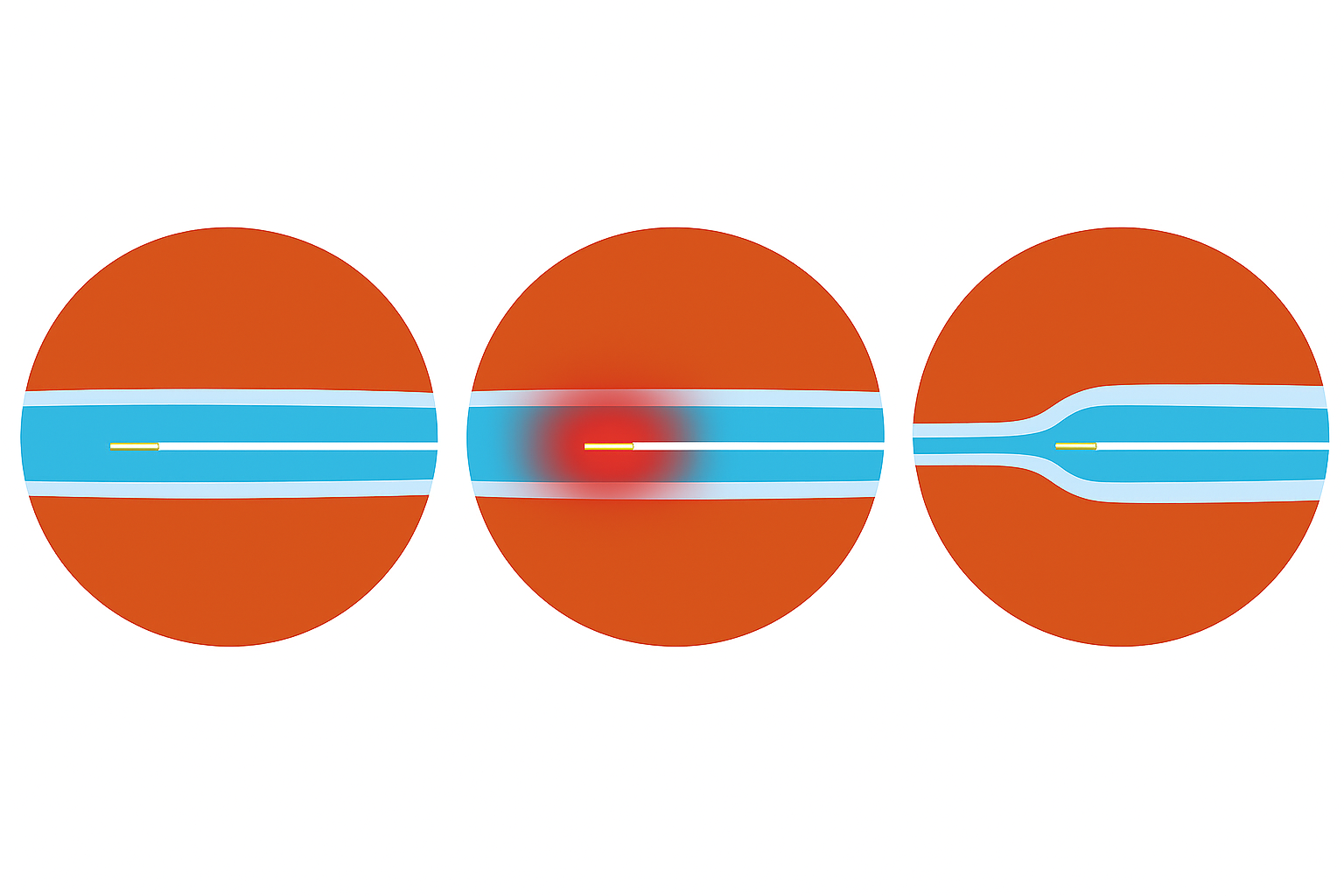Endovenous Laser Treatment (EVLT) — same‑day, minimally invasive varicose vein care
A precise, evidence‑led procedure to close problematic surface veins, relieve aching or swelling, and reduce visible varicosities with a prompt return to normal activities.
What is EVLT
Endovenous laser treatment (also called EVLA or EVLT) uses a thin laser fibre inserted into the affected vein under ultrasound guidance to close the faulty vein from the inside. It replaces open vein stripping for most patients and is performed as a day‑case procedure.
Who is suitable
EVLT is suitable for patients with reflux in the great or small saphenous veins and their major branches. Suitability is confirmed by a duplex ultrasound scan; not every varicose vein requires EVLT.
Before your appointment
- Pre‑procedure duplex ultrasound will map your veins and confirm suitability.
- No fasting required for treatments under local anaesthetic; wear loose clothing and bring a companion if advised.
- You will be measured for compression stockings before treatment.
The procedure
- Local anaesthetic and tumescent anaesthesia are used to protect surrounding tissues.
- A small puncture is made and a laser fibre positioned under ultrasound; energy is delivered as the fibre is withdrawn to close the vein.
- Typical treatment time is 30–60 minutes per leg; most patients go home the same day.
What to expect on the day: arrive for your appointment, have the ultrasound mapping confirmed, receive the procedure under local anaesthetic, and be observed briefly before discharge.
Aftercare and recovery
- Walk immediately after treatment and keep light activity; avoid heavy lifting and prolonged standing for a few days.
- Wear your prescribed compression stocking for the recommended period and attend follow‑up ultrasound as advised.
- Temporary bruising, tightness or numbness may occur and usually settles over weeks.
Risks and complications
Common, usually temporary effects include bruising, soreness and numbness. Less common risks are phlebitis, skin discolouration, nerve injury or deep vein thrombosis. Serious complications are rare and require prompt review.
Frequently asked questions
- Will EVLT remove all my varicose veins?
- EVLT closes the targeted refluxing vein; visible tributaries need a separate treatment usually during the same procedure.
- Will it hurt?
- The procedure is performed under local anaesthetic with tumescent infiltration to minimise discomfort.
- How long will the appointment take?
- Allow half a day for arrival, treatment and brief observation; the procedure itself usually takes 45-60 minutes for one leg.

